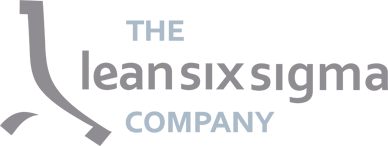What is Six Sigma?
The Six Sigma methodology is a repository of various proven quality principles and techniques. Elaborating on the quality circle of William Edwards Deming, Six Sigma is structured in 5 phases:
- Define,
- Measure,
- Analyse,
- Improve,
- Control.
A Six Sigma professional goes through all stages and optimizes the business processes step by step.
Why Six Sigma?
Sigma (σ) is the Greek letter which stands for the standard deviation of a population. The goal of the Six Sigma (6σ) methodology is a defect-free process. The sigma level indicates the extent to which the organization complies towards having a defect-free process. Achieving a 6 sigma level literally means: you make a mistake only 3.4 times out of a million. (i.e. out of a million invoices you only have to send 3 credit invoices).
Using practical examples our experienced trainers make sure you are familiarized with the Six Sigma methodology.
Six Sigma as a methodology
Traditional organizations accept a 2-3 sigma level, which means that these organizations are actually accepting 67.000 to 308.000 defects per million opportunities. The increasing demand for quality from consumers is creating awareness that organizations have to operate at a higher sigma level. The Six Sigma methodology provides guidelines for structured business process improvements to reach the desired sigma level without large investments or intensive restructuring.
Inter alia the Six Sigma methodology provides for:
- Enhance efficiency, quality and customer satisfaction
- Breakthroughs for “unsolvable” problems
- Short payback times and high ROI
- Powerful roadmap with concrete tools
“Being better is cheaper” – Mikel Harry
Six Sigma is a project-oriented approach for process improvements, which uses an organizational structure around the Six Sigma methodology to ensure a successful deployment.
Customer requirements as standard for performance
The Voice of the Customer (customer requirements) is the starting point of a Six Sigma project. Organizations working with the Six Sigma methodology are known for their high customer satisfaction and world-class performance in terms of quality. The Six Sigma methodology provides tangible and practical tools to map customer requirements and use this information as a starting point to improve processes.
Manufacturing vs. Services
Six Sigma is a quality management methodology which originally focussed on variation reduction in the manufacturing industry. In the past, is was often believed that quality in the service industry could not be easily be measured. Over the last decade, friend and foe agree that in the service industry processes are suitable for measurement thus providing valuable data for variation reduction.
The Six Sigma training
As mentioned earlier, implementing Six Sigma will require an organizational structure with different roles, ranging from sponsor through project lead to administrative support. These roles will be performed by Six Sigma professionals referred to as Yellow Belts, Green Belts, and Black Belts. The Lean Six Sigma Company provides courses for these Belts. Read more about the courses.
Want to learn more or have a question?
Request our prospectus.
